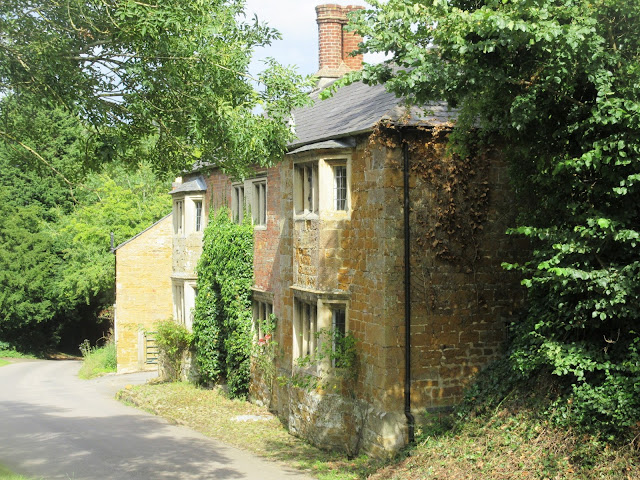East Farndon has no shop, no pub, no school and no post office. There is a church, a village hall and a defibrillator.
Like a lot of village over the Northamptonshire border, you find that the modern main road bypasses its ancient heart. So East Farndon has an impressive hollow way and a Back Lane which is home to some of its most important buildings.
There you will find Farndon Hall, which is too much of a wedding cake for my taste, and The Manor.
Though it's too secluded to photograph without trespass, you will also find The Limes, which was once a children's home. It was opened in 1912 to house children previously housed in Market Harborough workhouse.
The excellent East Farndon Village website has the memories of one former inmate:
My name is Edward (Teddy) Davis and I arrived at the home at the age of about 4 years, which would be 1943, and I left about 7 years old. I went to school and Sunday school at East Farndon.
It was a boy’s only home with ages ranging from 4 to 15. The Master of the home was blind. His wife was the Matron. She was a kind lady. We were fed and looked after very well and as long as we behaved, we were not punished. ....Each evening just before bedtime we were allowed to listen to “Dick Barton Special agent” on the wireless (very exciting). It used to be in the time slot now occupied by“The Archers”.Every Saturday morning two of the oldest boys would march us in twos to visit the cinema in Market Harborough to see the children’s matinee, where we would sit and munch our issued 3 digestive biscuits and a handful of penny chews while watching the likes of Roy Rogers, Gene Autrey (Westerns), Tarzan and various cartoons.Along the journey to Market Harborough was an Italian Prisoner of War camp and we would cross the road to talk to them through the wire fence.
That camp was on Farndon Road in Market Harborough, its site now occupied by the Gracelands mobile home park. No doubt the children found they had much in common with their fellow captives.
The elegant St John the Baptist stands on the hill at the top of the village. I didn't look for it on Friday, but close to, on the way to Great Oxendon, is a surprisingly wild area with gorse bushes. But then Northamptonshire can often surprise you: East Farndon has dry stones walls.
But the building that impressed me most is the elusive Kiln Yard, built in 1934 in the modernist style and now Listed. The tower was originally unglazed, but that idea did not survive exposure to many British winters.
Like The Lines, Kiln Yard is hard to photograph without tresspass, so I contented myself with catching glimpses of it from unexpected angles.
The village website records that the house was built for Edward Cox, the managing director of R. & W.H. Symington, the Market Harborough corset makers.
He and his brother were ousted in a 1962 boardroom coup. It should have been an ATV soap opera.






No comments:
Post a Comment